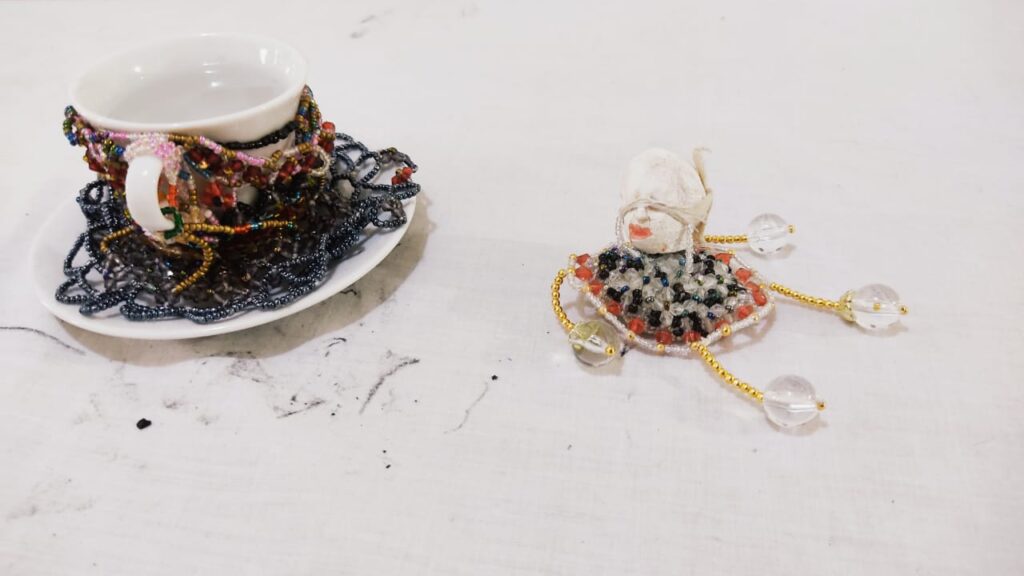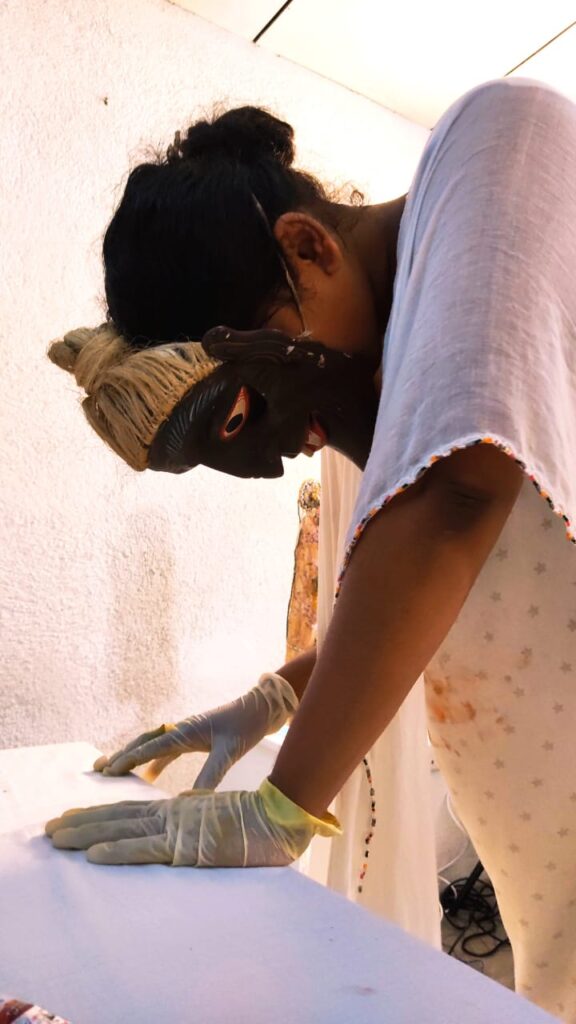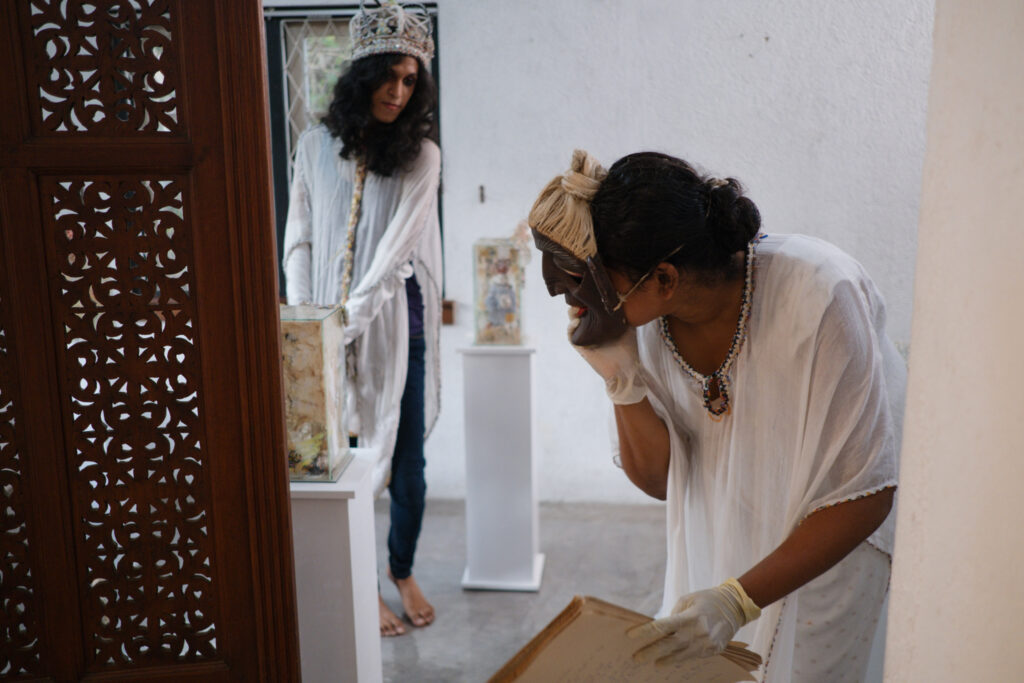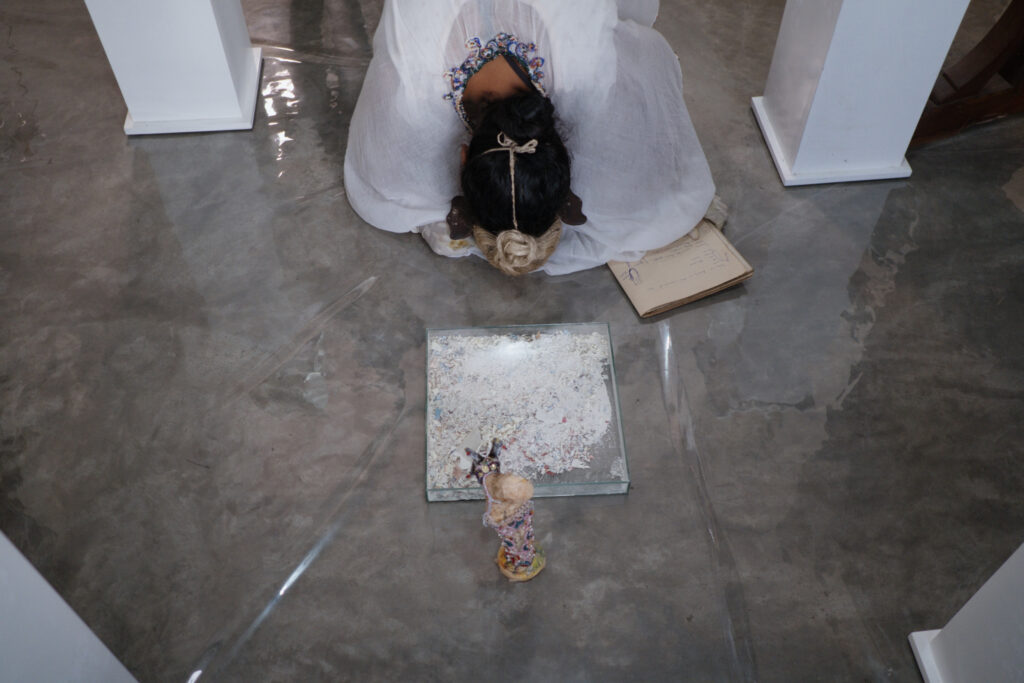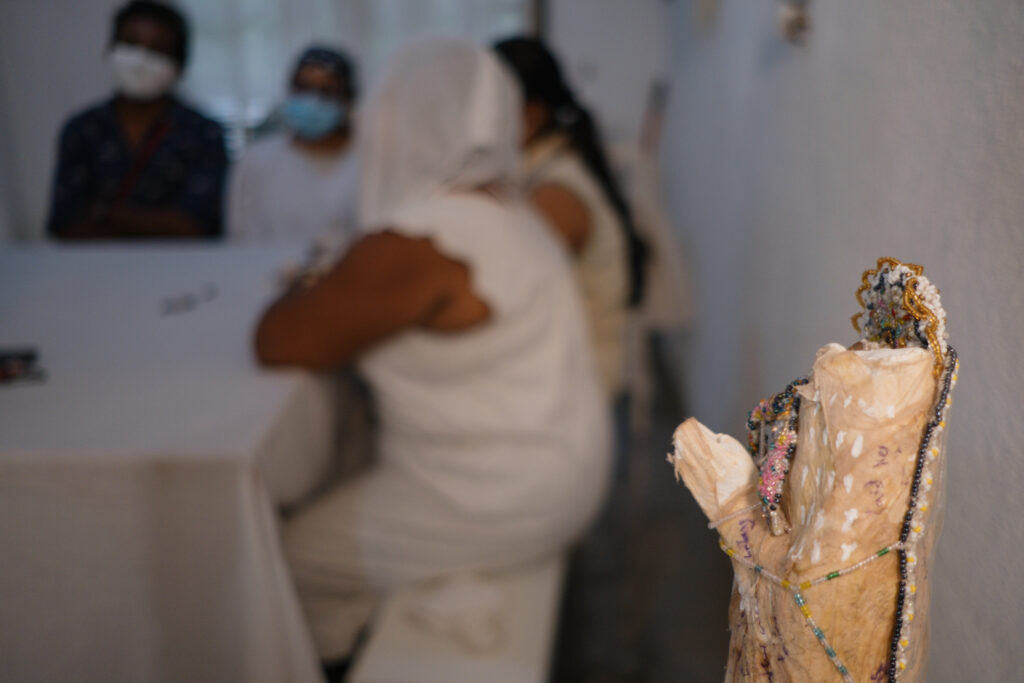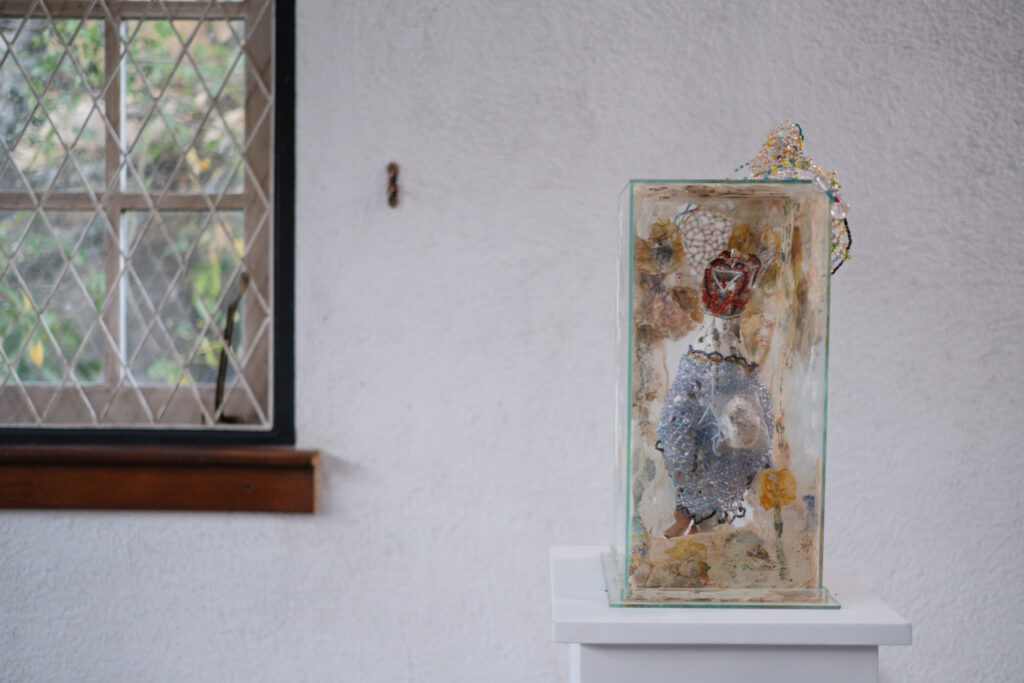Mother this land is not ours
Inda nilam ennaku sonndum illai amma
(Tamil script)
(participatory performance created in the structure of a game, where anyone can join in with the performers or be the performers themselves)
Bling! An attempt to divulge into the southern artistic ritualistic practice of Sri Lanka. These curative practices were carried out by the marginal communities of the feudal system (Karava ) . Hence throughout their ritualistic practices we could observe them critiquing , resisting the marginality by asserting multiple layers into the oral histories of the practice. by the time of Portuguese acquisition , we observe the artisans from the coastal region creating a form of absurd theatre as path way. A path way to break away from the shackles of marginality through humor and mockery prevailed in Raygama and Bentara region , known as “Kolama”.
Nonchi is a character/persona from the southern kolama (absurd) play tradition. A role defines an absurd old matriarch, married, mother of three children, wife of a drunken drummer. Nonchi enters as a masquerade presence bringing in an absurd interplay, interconnectivity upon presence of gender and sexual identity moving within varied temporalities of spatial presence in time. Embodying a role of narrator, revoking interplaying elements of representation of “identity”
Bringing in Nonchi not only interconnects with the tradition, past , identity but it is orchestrated as a form of resistance performative act . Gradually developed with complexities and critiquing its theatrical form . Departing away from its earlier hegemonic representation of dramatical display of an identity.
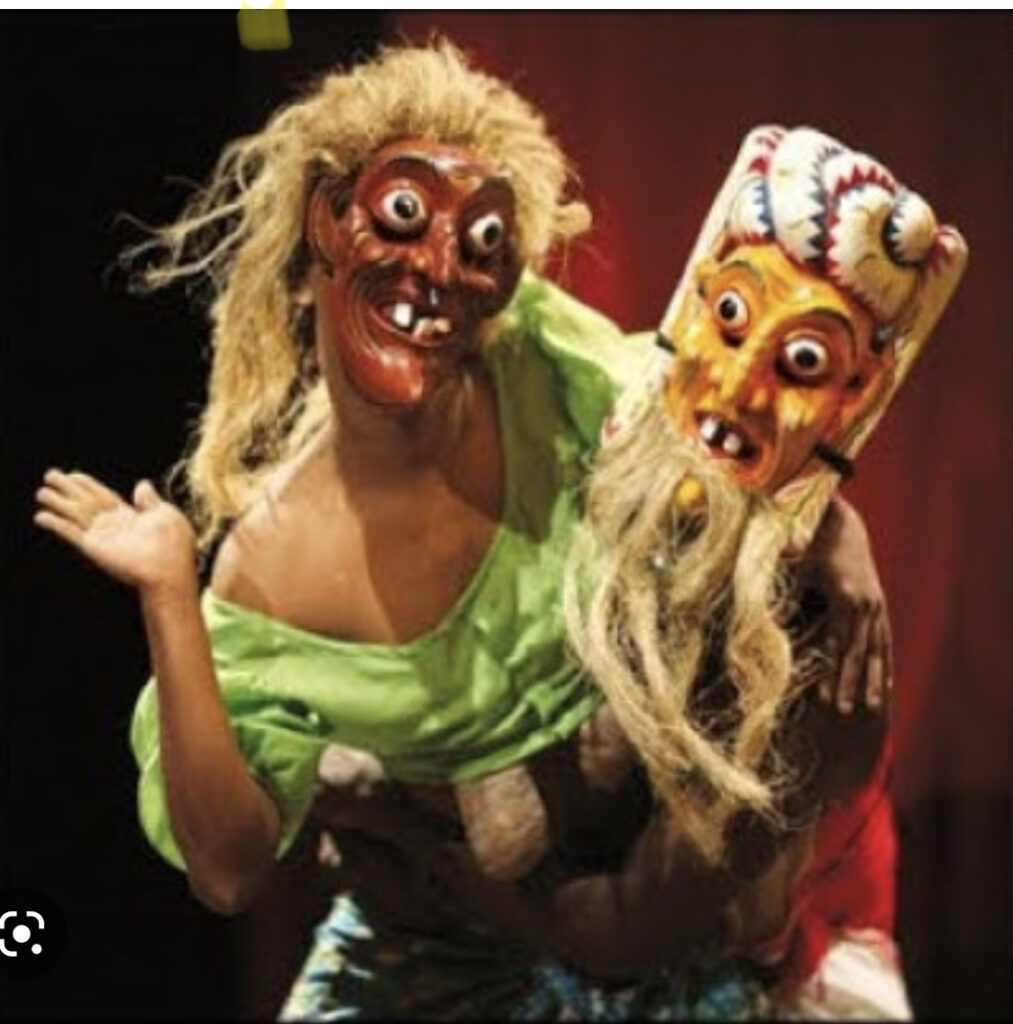
Southern artistic ritualistic tradition consists of multitude of layered disciplinary surrounding its curative performances . Mere fragment of its deep- rooted tradition contains the textile designing practice which embodies the ritualistic performers. The attires therefore distinctive to each branch (Rayigama,Bentara,Matara (longest tradition) )
Somapala Pothupitiya, one of the last artisans of “navandanne” artisans collective ( an artisan who has mastered nine disciplines ), has been my mentor in my quest to divulge into the formalistic journey of this artistic practice. I have been investigating its rhetoric and symbolical motifs that contain a universal interpretation of blessing, healing, and rediscovering about gender identity represented within its language.
These textile patterns clearly symbolizes cosmology and Buddhist philosophy. If one could deconstruct it’s rhetorical configuration ; the patterns speak about healing through blessings from the cosmic entity as well as pathways of enlightenment. What we factually can place is about the gender and sexual construction within these patterns. Buddhism’s “Anaathma” philosophy can be observed with each patterns of cosmic union . Birth occur according to Karma as well as the through karma how the five elements and cosmic balance . Therefore soul has no static being known as “I” or oneself . Therefore constructs a complex hypothesis that “Abhi dharma” in Buddhism clearly denies static chrono normative structures which formulates identity .
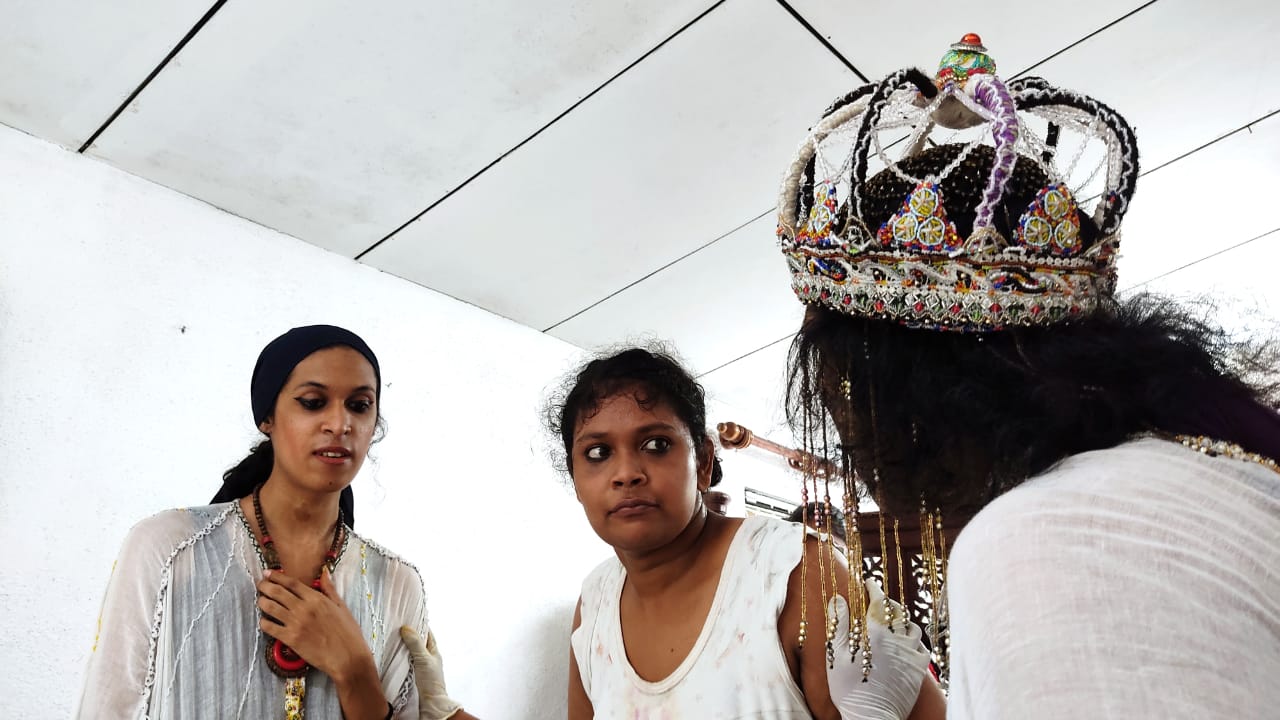
In recent times we can observe significant changes of orchestrating curative performances. “Gammaduwawa” ( specific stage for ritual purposes built in villages ) a curative ritual to gain blessings from the guardian deities has constantly been organized by the state at peak agendas . During the 2009 civil war period , as well as many nationalistic events these performances have been significantly modified for Bureaucracy purposes.
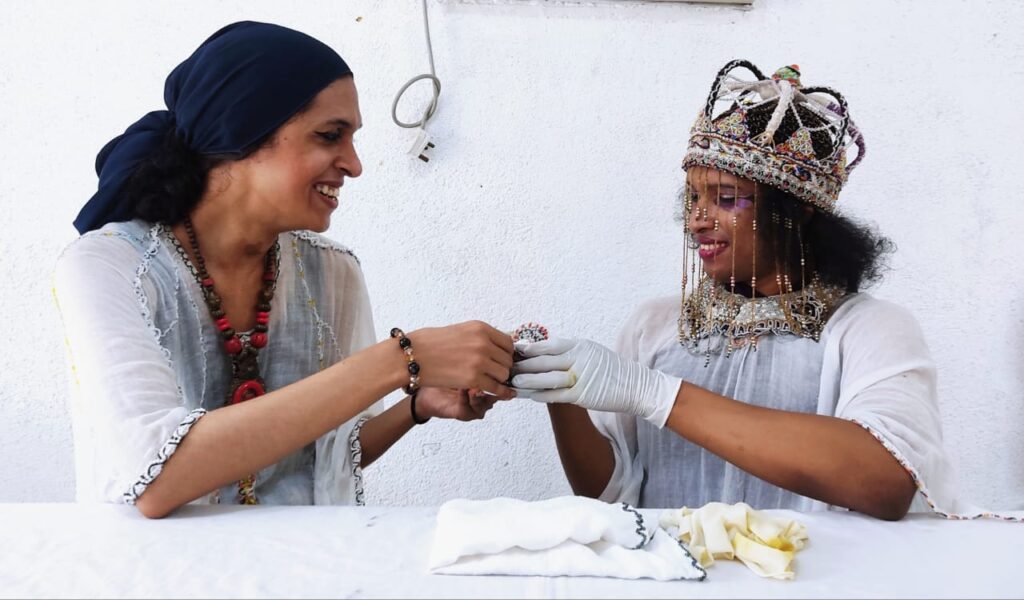
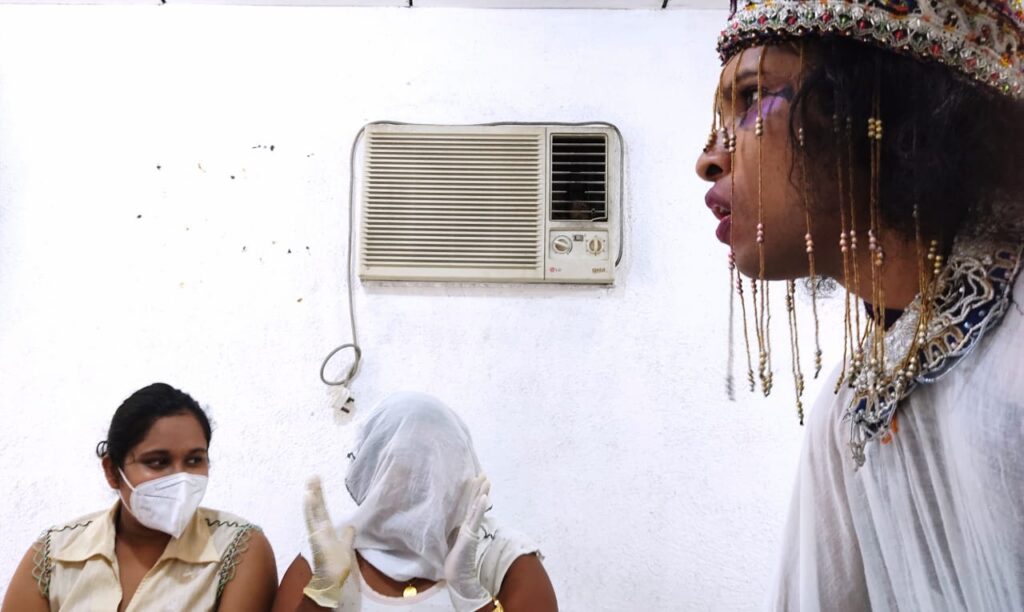
Memorials were built according to agendas of power-play or reformed in new modules that played out their schedule of “identity”. My research and process embark on a journey from the newly formed memorials within the Churches (Easter attack 2019) how destroyed, demolished idols we’re reinstated in the form of archaic museum.
The performances were constructed accordingly to the element of “play” or performative encompasses within archives , coined as archiviolithic nature. Enactors as well as the audience merges with each other sabotaging its structural divisions eradicating mimetic representation. The objects/ sculptures instantaneously transcends as sediments or else repertoires of the performance.
‘ Derrida’s analysis of the term “theatre of cruelty” is not of representation , but life itself , in the extent to which life is unpresentable . Life is the non representable origin of representation. Life doesn’t represent anything else but itself , this kind of performance evokes a higher level consciousness. (Liminalities : A journal of performance studies ,vol 14 , No 4, 2018; mapping the non representational Derrida and Artaud’s Metaphysics of presence in performance practice by Spros Papaioannon
